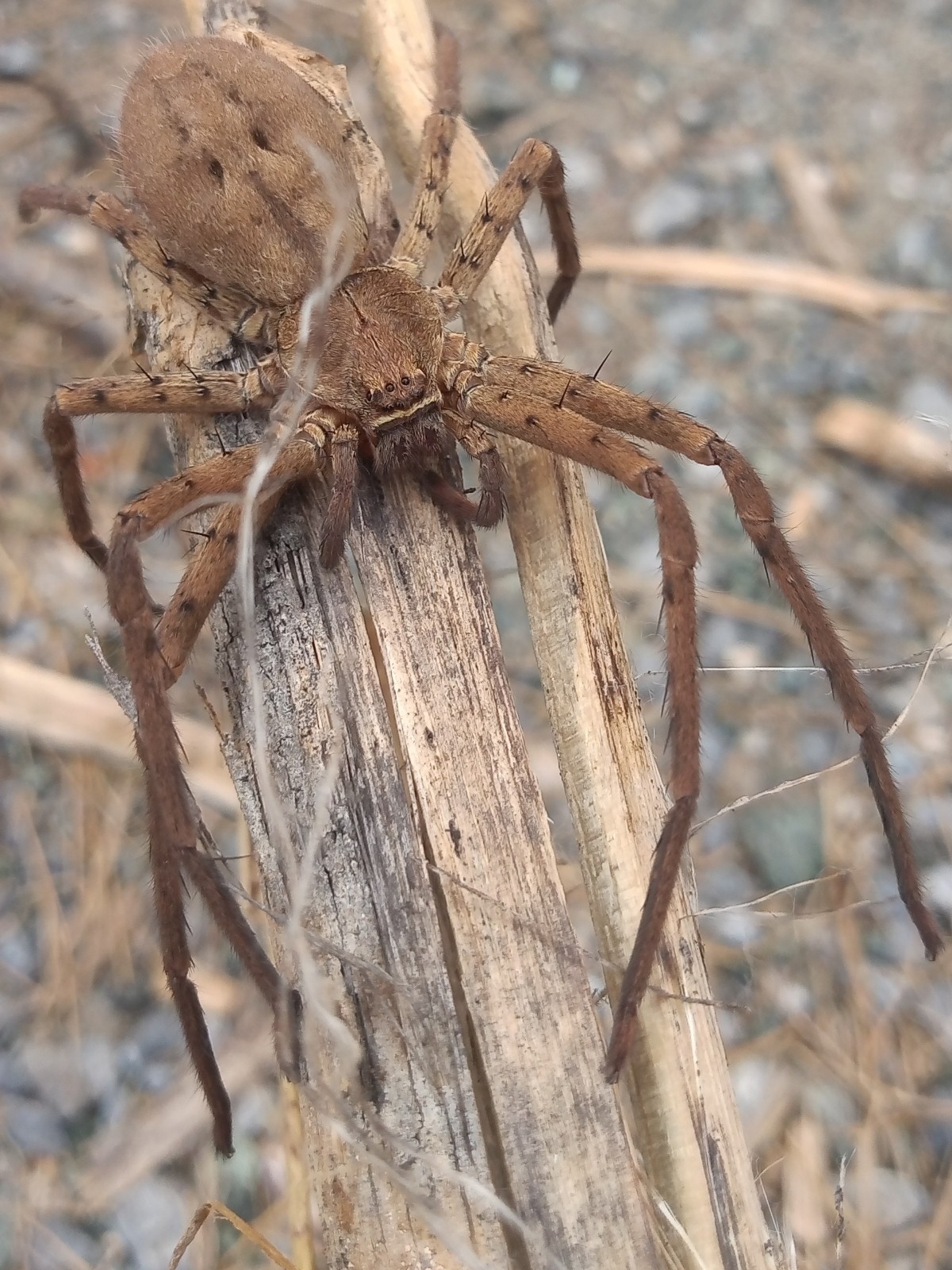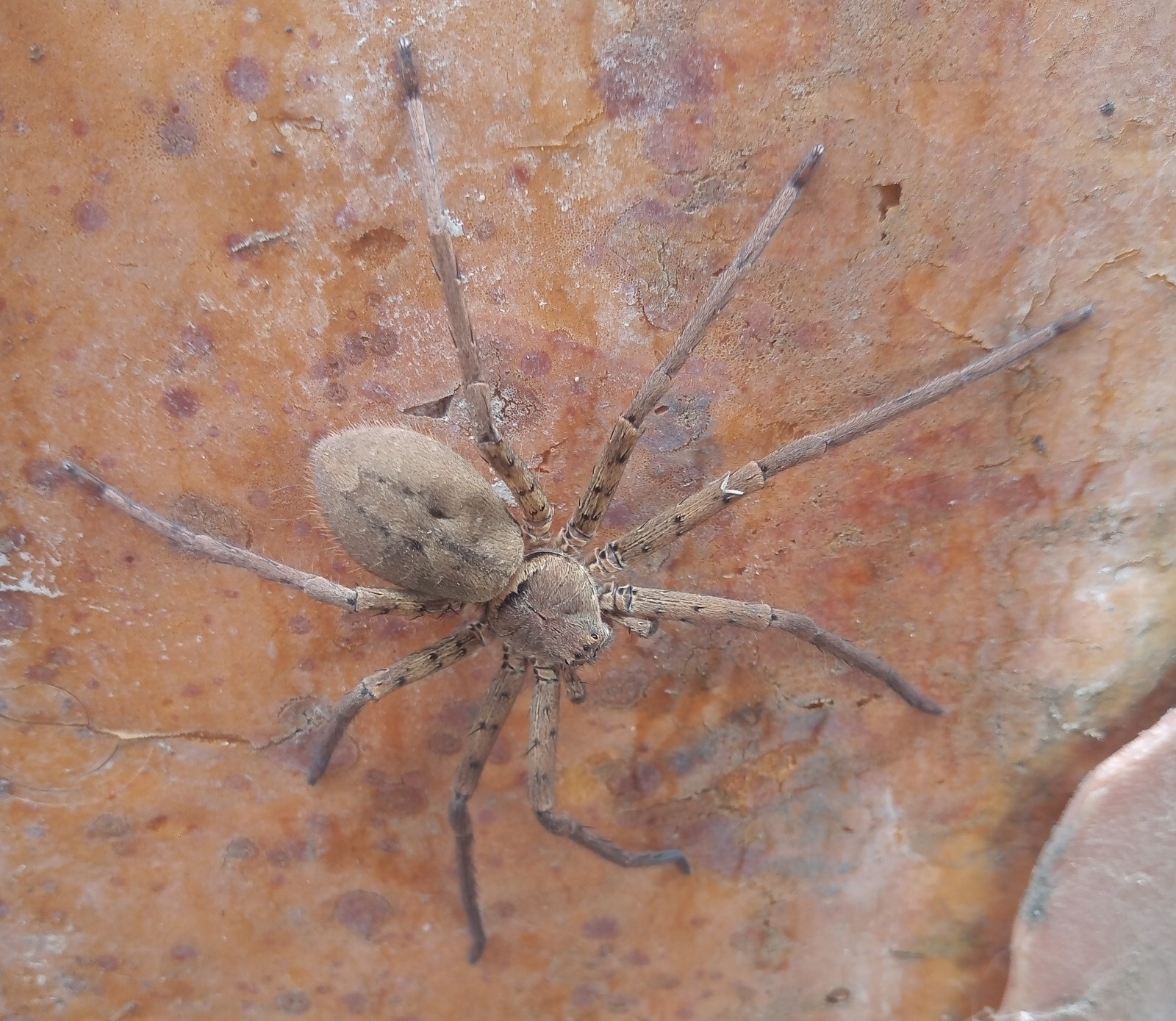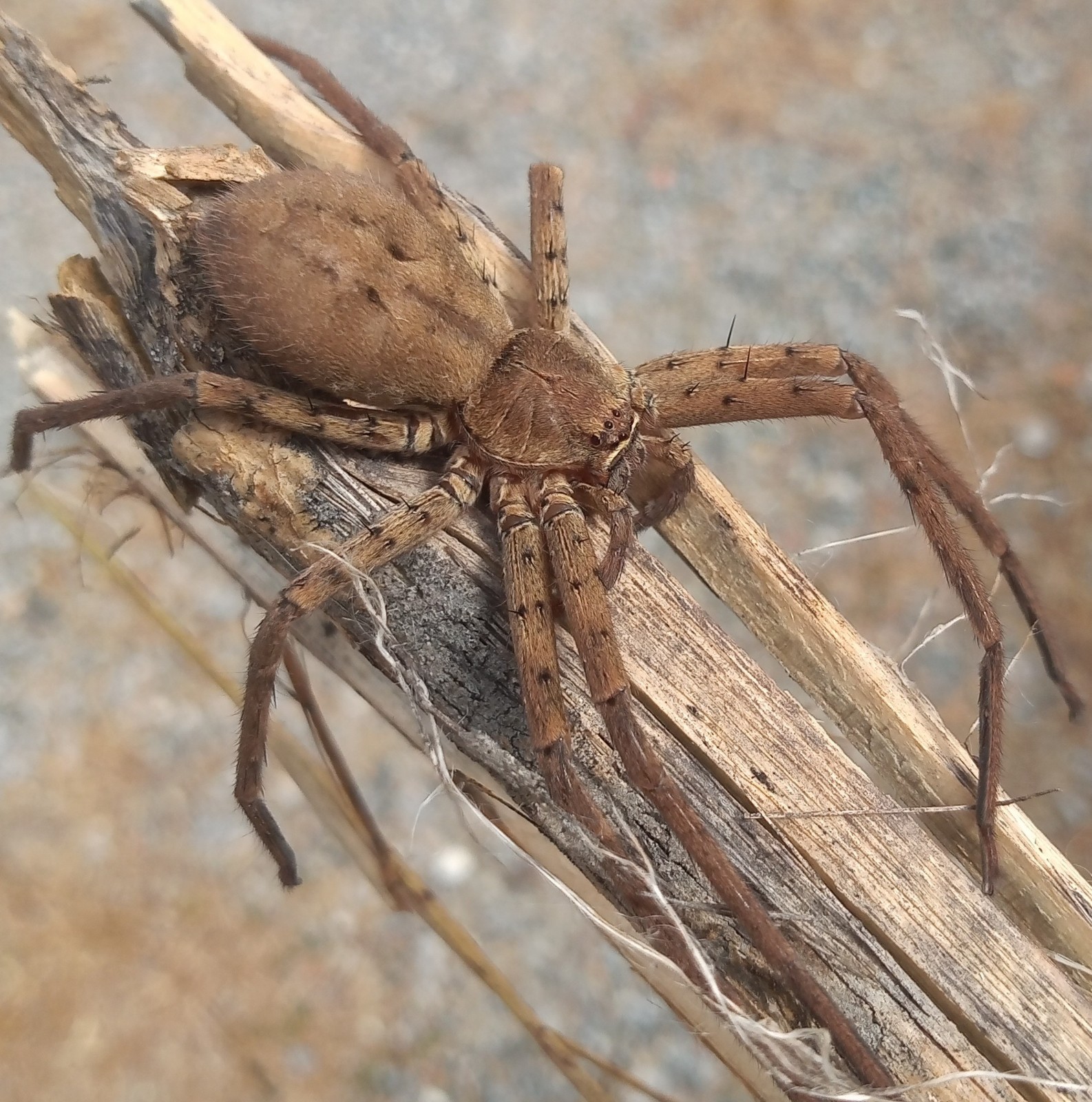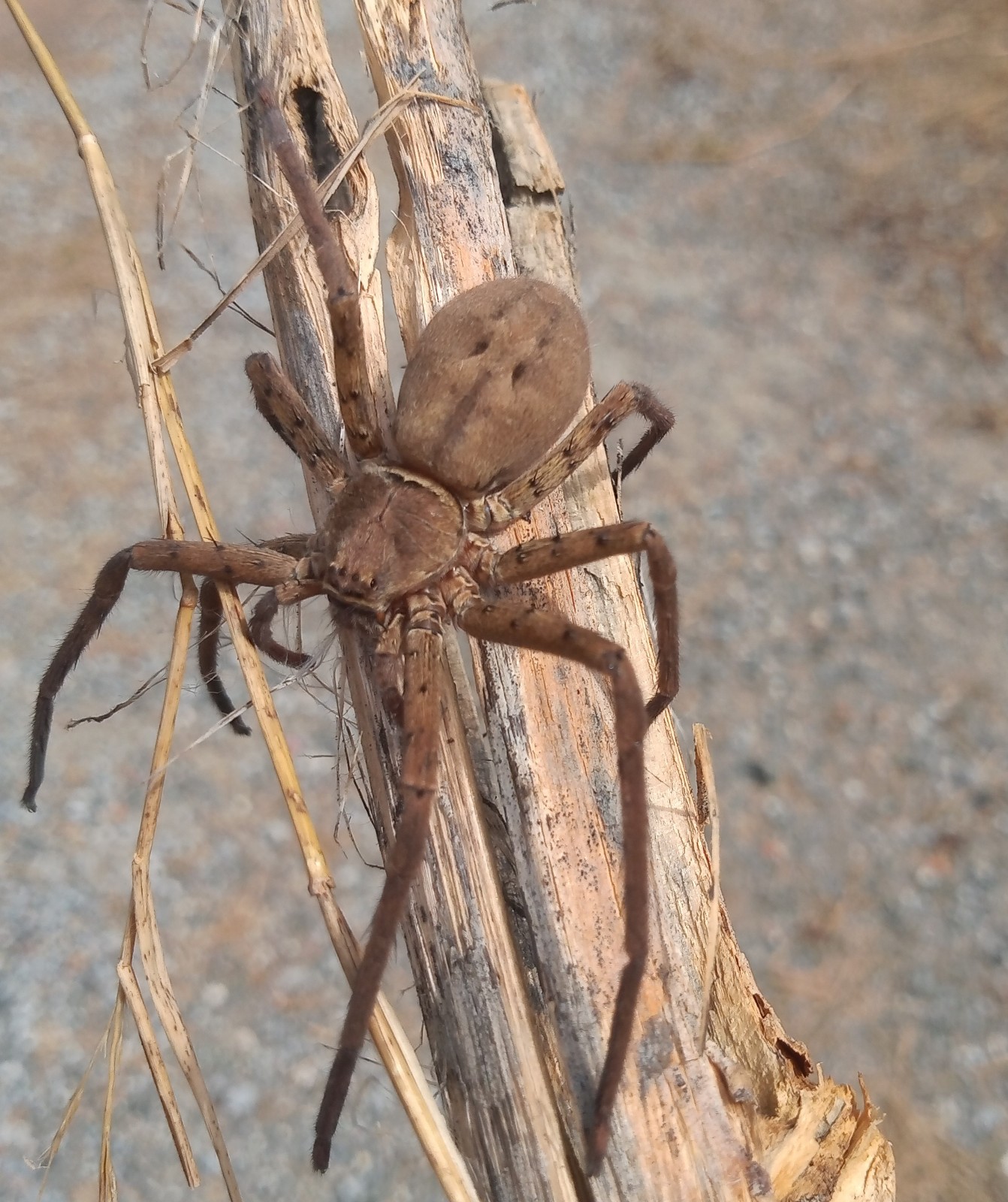[ENG-ESP] Large spider Heteropado Venatoria /Gran araña Heteropado Venatoria
Saludos amigos de #fascinatinginsects, espero que estén bien, en este gran día quiero compartir estas imágenes de una araña de gran tamaño que me sorprendió al abrir un pequeño cajón de plástico que había en mi taller. Al ver semejante tamaño decidí mantener la distancia porque no conocía esta especie de araña. Mi mujer me dijo que no me atreviera a tocarla porque son venenosas, fue entonces cuando se me ocurrió buscar mi móvil para hacer unas fotos y ver con detalle de qué especie se trata.
Es una araña heteropoda venatoria, o araña cangrejo, muy común en Sudamérica. Cuando son adultas, pueden medir entre 7 y 10 centímetros. Las hembras son las más grandes; sin embargo, los machos se identifican por sus largas patas, sus patas tienen setas eréctiles y cada pata está marcada por unos puntos negros. Se puede ver que tiene un caparazón grande y ligeramente peludo, lo que le da un aspecto de depredador aterrador.
Esta araña no se considera mortal, ya que su veneno no es suficiente para amenazar la vida humana. La reproducción tiene su origen en el macho, que emite una serie de sonidos mientras deja sus patas extendidas, y de esta forma corteja a la hembra. Tras el apareamiento, la hembra puede producir un saco en el que lleva los huevos y los sujeta con sus afilados pedipalpos. Puede llevar entre 100 y 400 huevos. La vida aproximada de esta especie de arácnido es de 465 días para el macho y de unos 580 días para la hembra.
Se alimenta de insectos como grillos, moscas y mariposas, entre otros. Puede cazar a sus presas sin tener que esperarlas en una telaraña. Es un depredador muy rápido cuando busca comida. Esta gran araña inyecta a su presa una toxina inmovilizadora y luego se alimenta de ella.

.jpg)
.jpg)





At home it is very common to find this type of spider, so we must be cautious, when receiving a bite from this heteropoda, it can block the potassium channels of our body, its bite causes a strong and intense pain. We must respect them.
En casa es muy común encontrar este tipo de araña, por lo que debemos ser precavidos, al recibir una mordedura de esta heterópoda, puede bloquear los canales de potasio de nuestro cuerpo, su picadura provoca un fuerte e intenso dolor. Debemos respetarlas.
| Camera/Cámara | Motorola E6 Plus |
|---|---|
| Localitation/Localización | Aragua - Venezuela |
| Photographer/Fotógrafo | Estebandido |
https://twitter.com/didoe9280/status/1491891028789547008
The rewards earned on this comment will go directly to the person sharing the post on Twitter as long as they are registered with @poshtoken. Sign up at https://hiveposh.com.
Su post ha sido valorado por @ramonycajal
Congratulations @estebandido1983! You have completed the following achievement on the Hive blockchain and have been rewarded with new badge(s):
Your next target is to reach 2250 upvotes.
You can view your badges on your board and compare yourself to others in the Ranking
If you no longer want to receive notifications, reply to this comment with the word
STOPCheck out the last post from @hivebuzz:
Support the HiveBuzz project. Vote for our proposal!
These are amazing photos! This is what is commonly called a huntsman spider (crab spiders are very different). They're like teddy bears, very very shy teddies.
!PIZZA
thanks, I didn't know, this spider is scary, it is the most common in homes.
PIZZA Holders sent $PIZZA tips in this post's comments:
@anikekirsten(2/15) tipped @estebandido1983 (x1)
Please vote for pizza.witness!
Amigo excelente informacion sobretodo para los que vivimos en el campo y nos encanta guardar y acumular muebles viejos.
si, hay que tener mucho cuidado cuando estamos limpiando nuestro hogar, garaje o deposito. saludos